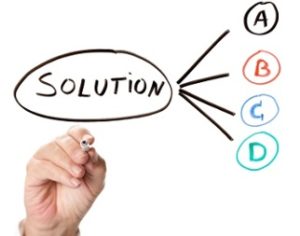When selecting an ERP system, organizations often start with a drive to become “Lean” and stay competitive. Teams typically see an ERP project as a way to evaluate, select and implement a system to be used in a Best-in-Class performance. Results include:
- reduction in manufacturing operating costs
- reduction in administrative costs
- improvement in order cycle times
- complete and on-time shipments
- manufacturing schedule compliance
Pressures that Impact Selecting ERP Software.
When considering all of the reasons for selecting an ERP system and implementing the new solution, studies have found that the top four pressures impacting the ERP system and its use are:
- Cost Reduction
- Improvement of Customer Response Times
- Being Easier to Do Business With
- The Need to Manage Growth Expectations
Rather than looking at the ERP software and simply getting the features and functions of the system up and running, companies need to analyze the way their business is run before they determine how the system will be used. They need to use business process review techniques to understand the needs of the business and then determine how the ERP system can satisfy these needs.
By developing as-is business process flows and proposed business process flows, changes needed in the business processes will be identified and the tools of the system can then be matched to these revised needs. Instead of using the system to do things “the way we have always done them”, the business processes should be changed to improve how the business operates. These proposed processes should include time tested best practice standards as much as possible (that is why it helps to have an outside expert involved in the analysis). Since ERP systems typically follow many of these best practice standards, the system should be able to match many of the business needs without modification. With this approach, the functions of the system that match the business will be implemented and those that don’t match will not be implemented.
Continuous improvement teams that are used in Lean efforts can also be used to fully utilize the capabilities of the ERP system. By developing proposed ways of running the business and having small focused groups of involved people addressing the business needs and how the system can help will allow the system to be utilized such that the system serves the user, not the other way around.
Key Issues to Address
In addition to the specific requirements that need to be satisfied, some overall issues that these teams can address around ERP requirements include:
- Eliminating dependence on spreadsheets and manual processes while still satisfying company and industry specific requirements.
- Integrating planning and execution processes
- Connecting the plant floor applications to the ERP system in order to increase visibility and control
- Using automatic event management that can be used to monitor transactions and conditions as they occur.
- Storing, retrieving documents within the system without the need for paper copies to be filed
- One-time entry of information by those who generate it that is available to all who need it
Linking to Lean
Not surprisingly, the top four pressures for utilizing an ERP system are very similar to the reasons for implementing Lean in an organization.
Sometimes the process of selecting an ERP system points out the need for Lean Enterprise initiatives and sometimes the Lean efforts point out the need for changes in the ERP system.
Although the contrary is argued by some, the two concepts of Lean and ERP do go hand-in-hand and must be complementary for the entire organization to be successful.





















+ There are no comments
Add yours